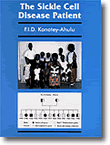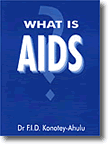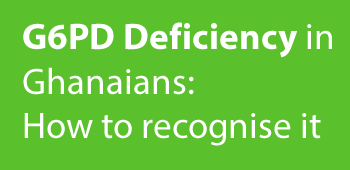Author - Physician Profile
Medical Training - Service - Teaching – Research - Publications
Felix I D Konotey-Ahulu FGA MB BS(Lond) MD(Lond) FRCP(Lond) FRCP(Glasg)
DSc(Hon.UCC) FGCP FTWAS FWACP DTMH(L’pool) ORDER OF THE VOLTA (OFFICER) was born at Odumase-Krobo, Ghana, on 12 July 1930. His early education
began with Kindergarten in Achimota School and attended several Presbyterian Schools before
returning to Achimota School for Cambridge School Certificate (Grade 1) and London
Matriculation (1st
Division).
From University College of the Gold Coast he went to London University to read Medicine:
Pre-Clinical studies at University College, Gower Street, London and then to Westminster Hospital
School of Medicine qualifying MB BS and MRCS LRCP in 1959. He returned home to Ghana, to
Korle Bu Hospital prior to postgraduate studies back in the UK for Diploma of Tropical Medicine
Liverpool University and Membership of the Royal Colleges of Physicians (MRCP Glasgow and
London) while working as Research Fellow of Professor (Later Dame) Sheila Sherlock at
The Royal Free Hospital. He returned home to the University of Ghana Medical
School where he researched into Haemoglobinopathy leading to writing his
Doctorate in Medicine London University Thesis while a Schofield Scholar at Christ's
College, Cambridge University in the Department of Professor Hermann FRS.
Born into a Sickle Cell Disease home in Ghana surrounded by sick siblings, his family was able to
trace the “Hereditary Cold Season Rheumatism” known in the tribe as “Hemkom” (body biting)
generation by generation with named sufferers back to 1670 AD - See www.sicklecell.md/images/generation.jpg a feat never before achieved in Medical History
for any hereditary condition. He therefore knew much about the disease before he went to
Medical School in the UK. He criticised the Received Wisdom that high Sickle Cell Trait incidences
up to 1 in 3 of all Northern Nigerians and 1 in 5 of all Eti-Turks can be explained by their
resistance to Falciparum Malaria. No, says Felix Konotey-Ahulu, they can be explained by the
mathematical Genetic Index which he invented: Male Procreative Superiority Index (MPSI) where
Polygamy makes males have more children than females. He proved this in his country Ghana and
explained it in acclaimed publications. In any case, Malaria was the commonest cause of sickle cell crises in his immediate younger brother who had the disease.
He first began investigating the Sickle Cell Disease & Clinical
Haemoglobinopathy Patients while working at the Korle Bu Teaching Hospital and University of Ghana
Medical School in Accra, directing the largest Sickle Cell Clinic in the world. The fact that he
was born into a home of 11 children 3 of whom suffered from Sickle Cell Disease taught him a lot
that was not in text- books. He quickly learnt the names of the hereditary cold season rheumatism in Ghanaian tribal languages. He became Director of the Ghana Institute of Clinical
Genetics at the Korle Bu Teaching Hospital http://bit.ly/tLeEC where he made several discoveries
and won National and International Awards.
Genetic Counselling and Voluntary Family Size Limitation [GCVFSL]
Professor Felix Konotey-Ahulu has simplified the concept of the sickle cell disease
phenotype by using the term ‘ACHEACHE’ implying that only when both father and mother pass on
their ‘ACHE’ genes to the same child does the hereditary ailment (which has had tribal names for
centuries) manifest itself. He uses Facebook to educate Ghanaians especially, and the world in
general, that 1 in every 3 Ghanaian carries one ACHE gene making them NORMACHE.
Sperm carries just one of the double genes ‘NORM’ or ‘ACHE’, never both. Similarly, the
egg of a NORMACHE female like Konotey-Ahulu’s own mother would carry the code ‘NORM’ or
‘ACHE’, never both. Depending on which sperm met which egg to produce a baby, his
parents’ 11 children shared the phenotypes ‘NORMACHE’ (4 of them), NORMNORM (4 of them), and
the 3 siblings who had hereditary cold season rheumatism were ACHEACHE. If his Facebook does
little else than pass on this message to every single reader he would be enormously
satisfied, for that was exactly what his KÁGÈ SICKLECELL FOUNDATION was set up to do
[‘KÁGÈ’ stands for ‘Konotey- Ahulu Genetic Epidemiology’]
The ACHEACHE hereditary malady called hemkɔm (body biting) in his Krobo/Dãngme Mother
Tongue, chwechweechwe in Gã, ahotutuo (Twi), Nuidudui (Ewe), dobakɔtiri (Dagbãni),
nwiiwii (Fante), aromolegun or lakuregbee (Yoruba) – this hereditary cold season malady was
traced in Konotey- Ahulu’s own family generation by generation backwards to 1670 AD with names of
sufferers – the first time this has been done in Clinical Medicine for any hereditary
disease. See http://www.sicklecell.md/images/generation.jpg which maps out how polygamy in his
forebears helped him to identify those wives (actually named in
http://www.konotey-ahulu.com/images/generation.jpg) that were the ACHE gene carriers. Voluntary Family Size Limitation occurs when beta-globin
gene-carriers, mainly males, are persuaded to procreate less, as Publications 29, 100, 109, 128,
277 on Male Procreative Superiority Index show.
To understand how an African could trace a hereditary disease generation by generation backwards
over 3 Centuries, see chapter 2, pages 6 to 20 of his “The Sickle Cell Disease Patient”
[Publications 163, 181]. Researchers who want published references in international journals
will find information in his list of publications from 1965 year by year until 2018 – some 410
major and minor publications which latter, though brief, carry important messages too.
Professor F I D Konotey-Ahulu’s publications 1963 to 2018 with discoveries and inventions are a
remarkable contribution to Global Medicine in two areas: (1) Africa’s leading hereditary affliction
Sickle Cell Disease and (2) The Pandemic AIDS. He has won 12 National and International
Awards for Outstanding Research in Sickle Cell Disease & Other Haemoglobinopathies,
African Anthropogenetics, AIDS, and Tonal Linguistics in which, using his new insights into how
to communicate Tonal Words reproducibly for Adult Education in Tribal Mother Tongue, he has
simplified reading text even for illiterates.
In the realm of Ethics in Medicine he was invited to give papers at The First International Congress on DNA Technology in Crete, Greece in May 1985, The First International Symposium Lake Superior State University, USA on The Human Genome Diversity Project (HGDP) September 1999, and The Fist Post US President Inaugural Symposium on The Human Genome Project at Howard University in Washington DC in January 2009. [Publications 142, 198]
Distinguished Professor of Medicine and Haematology Max Wintrobe University of Utah gives him 3
pages in his book “Haematology: The Blossoming of a Science – A Story of Inspiration and
Effort”, and Dr Helen Ranney MD Professor of Medicine and Haematology, Albert Einstein University
College of Medicine says of him: “There is no single clinical experience in the United
States comparable to that of Dr Konotey-Ahulu”.
The National Foundation and The March of Dimes (USA) invited him to tour American Medical
Institutions to lecture on how they in Ghana managed patients without the fuss of regular
transfusions and how their patients managed to excel in school and university. He lectured in
India, Turkey, Hungary, Switzerland, Sweden, Germany, Brazil, Singapore, Greece, Australia and many African countries. He gave
Edinburgh University’s 1976 MacArthur Genetics Lecture. Was on WHO Regional & Geneva Expert
Advisory Committees for many years.
When the Dr Martin Luther King Jr Foundation gave its first International Award to 20 leading
researchers world-wide for Outstanding Research in Sickle Cell Disease Dr Konotey-Ahulu was
chosen to give the Keynote Address with other recipients like Nobel Laureates Linus Pauling and Max
Perutz on the platform alongside A C Alison, Hermann Lehmann, Roland Scott, Bela
Ringelhann, Graham Serjeant, Sam Charache, J V Neel, Helen Ranney & others.
When the AIDS pandemic broke Dr Felix Konotey-Ahulu toured African countries at his own
expense, borrowing money from NatWest Bank London SW7, because no one would sponsor
him. He went to find out what was happening at the grass roots, and he published his
findings in international medical journals and in a book “WHAT IS AIDS?” [Publication 156] He
devised Tribal Methods to convey the “Stop AIDS” Message which was being distorted by scientists
putting ultimate blame for the Epidemic on the Green Monkey. He visited the two largest African
Green Monkey meat markets in the world at a time when the only AIDS patients in the city (Monrovia
in Liberia) had been women carried home to die from Abidjan where they were in the International
Sex Trade.
Felix Konotey-Ahulu was the only person known to have travelled to African countries where AIDS was
rife to study the clinical epidemiology of the disease in the early stages of the Epidemic, making
him query the widespread assertion by reputable scientists that the African Green Monkey
was the cause of the tragedy. Similarly, he has claimed in the British Medical Journal recently
that his superb British undergraduate and Postgraduate Education has equipped him to dismiss claims
from CDC that Africans eating bats caused Ebola Virus Disease.
Latterly Professor Felix Konotey-Ahulu has been vocal in his recognition that modern Science is
practised by two types of researchers: Those (as Lord Ritchie Calder once published in the Lancet)
who do much good and prevent diseases, and those who produce “Public Health in reverse”. Africa,
Konotey-Ahulu says needs to know the difference and encourage the former. As Kwegyir
Aggrey Distinguished Professor of Human Genetics in the Faculty of Science, University of Cape
Coast, Ghana, Felix Konotey-Ahulu has sought to identify students with “Original Thinking
Qualities” through his Annual Kwegyir Aggrey Prize Exams by separating those who only know “What to Think” to pass exams, from those who know “How to Think”
enabling them to criticise “Received Wisdom”.
A great encourager of younger scientists to probe “Received Wisdom” he has by his website
www.sicklecell.md or www.konotey-ahulu.com which has global appeal made undergraduates and
postgraduates read widely.
where he made discoveries like the ‘Mid Pitch Arrest’ and ‘Lower Mid Pitch Arrest’ in his
Krobo/Dãngme-Gã Mother Tongue, critical to Public Health Education. For example, the Krobo word
written “hior”, unless pronounced tonally correctly may be read as meaning (i) disease (ii) white
(iii) debt, (iv) here. He has devised a fail-proof method of pronouncing the word correctly so that
even without a context, the Krobo native can get the meaning immediately. His Tadka Phonation
Technique is not in any textbook of Linguistics. He believes that teaching Public Health in Africa needs to be done in the Mother Tongue. [See http://bit/ly/bEdcc4 Publication 326].
He has published that Cleft Palate in his tribe can be a social disaster because someone wanting
to say “I have scrubbed” will be heard to say “I have passed wind” in the language due to
nasalisation in cleft palate. Folic acid given to pregnant women is known to prevent
children being born with cleft palate which makes vowels sound nasalised. [Publication 298]. This
is not in any textbook, underlying the fact that African Research needs increasingly to address
African problems.
Internet: Dr Felix Konotey-Ahulu’s website www.sicklecdell.md or www.konotey-ahulu.com attracts much attention (1,042 users in January 2018) because he stresses that “The Patient” is more important than “The Disease”, as he once illustrated in The Lancet [2005, Volume 365, pp 382-383 – Publication 225]: One 5 year old sickle cell anaemia (‘SS’) twin developed a stroke, while the other identical twin did not, and he explained the role of CIRCUMSTANCES.
His 643-page book “The Sickle Cell Disease Patient” was described by Professor Geraint James MA MD FRCP as follows: “This thesaurus or treasure trove of information adds a new dimension to the world of sickle cell disease”. Professor Helen Ranney MD of Albert Einstein College of Medicine, New York, said: “There is no single clinical experience in the United States comparable to that of Dr Konotey-Ahulu”. Other comments [What people say] in www.sicklecell.md are by Howard University’s Professor Roland Scott MD, Professor Alastair J Bellingham MD FRCP FRCPath, Professor Sir David Weatherall FRS MD FRCP FRCPath, and University of Utah’s Distinguished Professor Dr Maxwell Wintrobe MD. The Foreword to his book by Professor Roland Scott MD has this: “Serious students of the haemoglobinopathies will be intrigued by the inclusion of abstracts on the clinical histories of 133 case reports and the listing of over 4000 references from the world literature. This book is a meritorious addition to the medical literature and Dr Konotey-Ahulu is revealed as a seductive narrator as he tells the story of the sickle cell disease patient”. [Page ix].
Medical Controversy
Professor Konotey-Ahulu has sought to correct false information in Medical Journals. He
was once given four (4) body guards in Philadelphia when pointing out deceit by some Insurance
Companies deliberately calling Sickle Cell Trait Sickle Cell Disease, and charging healthy athletes
exorbitantly (150%) Health Premium. See Publication 271 – Brit Med Journal July 28 2007, pages
210-211.
Also, when Lancet published a research claiming that homosexuals and some Central Africans
inherited a peculiar gene “Gc1f” that predisposed them to HIV/AIDS Dr Felix Konotey-Ahulu
was the first to write to criticise the research in Lancet as “leaves a lot to be desired”
[Publication 146]. The authors later confessed to “Erroneous Data” and withdrew the publication
from The Lancet. But BBC’s “SCIENCE IN ACTION” had already given the world the false
information at 09.15 GMT Sunday May 3 1987, repeated the following week.
And, again, Konotey-Ahulu criticised articles on prenatal diagnosis and selective abortion
in haemoglobinopathy, as he presented evidence of his patients doing better cerebrally than many
unaffected siblings. Such criticisms, and his support for GHANA ACADEMY OF ARTS & SCIENCES in their
objection to powerful international institutions planning Ebola Virus Vaccine Trials in Ebola- free
Ghana without proper scrutiny of procedures are well documented.
First to Describe [*Means Discovery or Invention]
Below is his list of 30 “First to describe” articles. Year-by-year Publications List of some 410
articles on www.sicklecell.md contain major and minor themes of which the latter, though short,
often contain important information.
- Sicklaemic Human Hygrometers [Publication 2]
- Parkinsonian tremor audible through the stethoscope [Publications 14 & v19]
- *Mental Nerve Peripheral Neuropathy from sickle cell crisis [Publication Number 57]
- Torrential epistaxis & facial skin ulceration in sickle cell anaemia [Publication 7]
- Polygamy and high sickling rate [Publications 29, 100, 104, 163, 181]
- Bilateral femoral head necrosis preventing procreation in sickle cell disease [Publication 37]
- *'Gnathopathy' coined and quantified in sickle cell jaw protrusion [Publications 26, 163, 181]
- 'Tafracher', Ghanaian apologetic word medically applied [Publication 86]
- The Three Ps - population, poverty, politics - in Health Care Delivery [Publication 139]
- *Male Procreative Superiority index (MPSI) [Publications 100, 109, 128, 277]
- Missing the wood for one genetic tree? [Publication 142]
- *Retrospective Phenotyping of genetic disease for 3 centuries [Publications 50, 163, 181, 198]
- Clinical epidemiology vs seroepidemiolgy in Africa's AIDS problem [Publication 145]
- Extensive palatal echymosis from fellatio - caution with AIDS at large [Publication 148]
- Some thirty features of AIDS in Africa [Publication 151]
- An African on AIDS in Africa (Invited Editorial Royal Soc. Medicine) [Publication 155]
- Probing anecdotes in traditional African therapeutics [Publication 176]
- The Human Genome Diversity Project: Cogitation's of an African Native [Publication 198]
- *Social pathology of Cleft Palate in The African: Mathematical Precision of Pitch Gaps in Tribal
Tonal Linguistics. Ghana Medical Journal 2008; 42: 89-91. (June 2008). [Publication 298] - *Tonic Sol-Fa Is The Foundation Of Tonal Linguistics. DRUMSPEAK (Supplement) International Journal of Research in the Humanities. New Series Volume 3. No. 1, May 2010. http://www.bit.ly/bEdcc4 [Publication 326]
- Sickle cell anaemia, sickle cell thalassaemia, sickle cell haemoglobin C disease and
asymptomatic haemoglobin C thalassaemia in one Ghanaian family. [Publication 21] - Thirteen children from 12 pregnancies in sickle cell thalassaemia. [Publication 27]
- Treatment of hyperkalaemic cardiac arrest by timely haemodialysis [Publication 4]
- Music (and Tonal Language) and the art of being human [Publications 339, 340, 341]
- Sequencing genome of 1000 volunteers. Why do this anonymously? [Publication 349]
- *The kanad (Konotey-Ahulu Norm Ache Dice) in Genetic Counselling for sickle cell states
www.sicklecell.md [See 6 cubes invented for counselling Publication 347] - History versus Limits of Science: Is Solomonic Genius a Y Chromosome Phenomenon? [Publication 376] Journal of Genetic Diseases or Disorders 2014; 3: 2. (May 13)
- University of Cape Coast Golden Jubilee Message: Sickle Cell and Allied Haemoglobinopathy –
Genetics that touches You and Me [Publication 377] http://bit.ly/1DzHceM - *Discovery of “Haemoglobin Korle Bu” by Konotey-Ahulu et al - the first example of intra-genic crossover [Publication 16]
- *“Haemoglobin Osu-Christiansborg” by Konotey-Ahulu et al [Publication39] See
http://www.sicklecell.md/publications_articles.asp for complete list of 410 articles.
Felix I D Konotey-Ahulu is Kwegyir Aggrey Distinguished Professor of Human Genetics, Faculty of
Science University of Cape Coast, Ghana & Former Consultant Physician Genetic Counsellor
in Sickle Cell Disease & Other Haemoglobinopathies & Director of Ghana Institute of Clinical
Genetics, Korle Bu Teaching Hospital, Accra. Lately in UK at 9 Harley Street London, W1G 9AL
See his many awards here | Download this as a PDF document here
His website www.konotey-ahulu.com or www.sicklecell.md is for public education.




